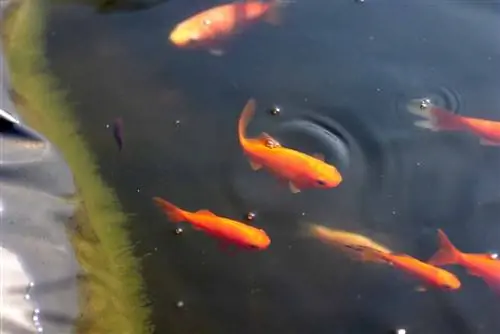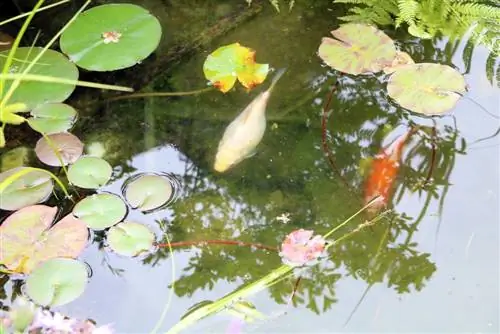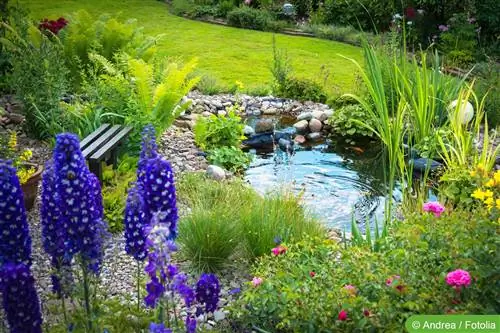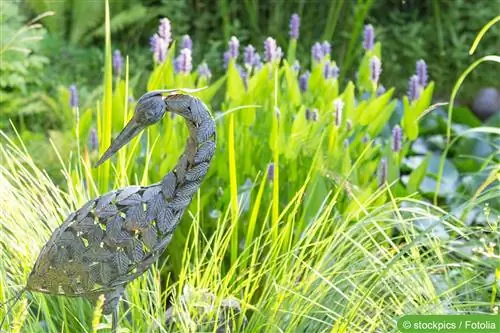- Author admin [email protected].
- Public 2023-12-17 03:39.
- Last modified 2025-01-24 12:45.
A garden pond not only provides visual variety for the plants in your garden, it also attracts numerous birds and insects. A weekend is enough to invest. But without sufficient planning and attachment of the pond liner, the enjoyment will soon be over. If you take the necessary care here, you will enjoy your garden pond for a long time.
Why do I have to attach pond liner?
By attaching the pond liner to the bank, you prevent the liner from slipping into the pond. This is particularly important on a steep pond bank. Sometimes it is enough to simply place stones on the foil. These can be stone or pavement slabs or even coarse field stones. This will definitely prevent the pond liner from slipping, but if plants grow close to the bank, this construction is not sufficient. You also need a capillary barrier.
Tip:
Only attach your pond liner when the pond is already filled with water or when the liner has adapted to the ground, otherwise there may be too much tension on the attachment. This can cause the film to tear.
How do I attach the pond liner to a wall?
To attach the pond liner permanently and stably to a wall made of stone or concrete, you have various options that can also be easily combined with each other:
- gluing
- Fastening with rails
Glue pond liner
Gluing is basically the easiest and most cost-effective way to attach the pond liner to the concrete. Be sure to use an adhesive that is weatherproof and suitable for your film. The adhesive must also be able to adhere well to concrete. Conventional foil adhesive, such as that used to repair pond liner, is not sufficient. You're most likely to find what you're looking for at specialist roofing stores. Adhesives based on styrene rubber are suitable. They successfully bond films made of PVC or EPDM (ethylene propylene diene rubber) to stone, concrete and even metal. The costs are around 5 to 7 euros per m². When working with this glue, be careful not to let it come into contact with your skin or inhale fumes. It can cause allergic skin reactions and inflammatory skin irritations as well as dizziness and sleepiness.
Advantages of gluing:
- low cost
- low time investment
- weather and temperature resistant
- no special tools required
Disadvantages:
- irritates skin and eyes
- Vapors can cause dizziness and sleepiness
- Pond liner is not laminated
Fastening with rails
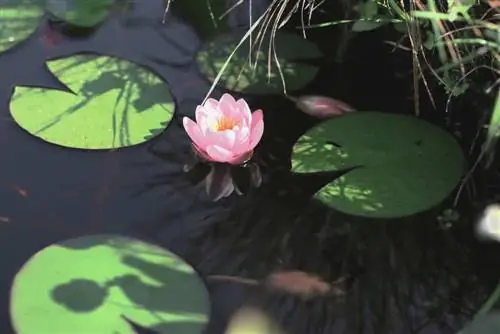
The rails constantly come into contact with the pond water, so they should definitely be made of corrosion-resistant material. Rails made of stainless steel or anodized aluminum are ideal. Although plastic is also corrosion-resistant, it does not retain its shape at high temperatures. They expand too much when heated intensively. You can get suitable rails including fastening instructions from a hardware store or garden store. After fastening, the rail can either be visible or covered with a bank mat. There are different types of rails: wall profile, combination profile and bank band. Depending on the type of pond wall you have, the systems are more or less suitable.
Advantages:
It's easy to conceal the pond liner
Disadvantages:
- not as cheap as glue
- time consuming
- The film can easily tear in the screwed areas
Fastening with wall or wall profile
The wall profile is suitable for attaching the pond liner to palisades and walls made of different materials (concrete, stone). It is screwed to the pond wall together with the pond liner and can also be attached to curved surfaces. To conceal the rail, you can attach bank mats together with the pond liner and then fold the bank mat back towards the pond. The rail is then no longer visible. The wall profile is very stable and costs approx. 5.50 to 6 euros per meter.
Fastening with bank tape
The bank tape is suitable for later inconspicuous attachment of pond liner, fleece and bank mat. It can also be mounted on curved pond edges. A rubber lip is placed on the bendable aluminum profile, which also serves as a suction barrier. The cost per meter of bank tape including ground anchors is around 15 to 17 euros.
Combi profile
The combination profile is a combination of wall profile and bank strip. It is particularly suitable for hard-to-reach places under bridges or overhangs. Work with the combination profile can also be carried out alone without helpers. It can also be attached to undulating pond walls such as palisades. First, the bank tape with the foil is screwed to the pond wall, then the wall profile is attached in a second step. The cost per meter is around 14 euros. A shore mat can also be attached here.
What are shore mats used for?
With bank mats you can hide or conceal the rather ugly black pond liner and the fastening rails. The mats consist of different layers, a lower fleece layer and the plantable top. Some bank liners even have plant pockets integrated into them that you can plant with various pond plants. Alternatively, there are also sanded and gravel pond liners that are not suitable for planting, but do make the edge of the pond attractive due to their surface design.

